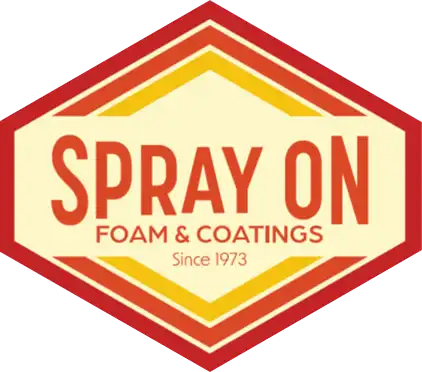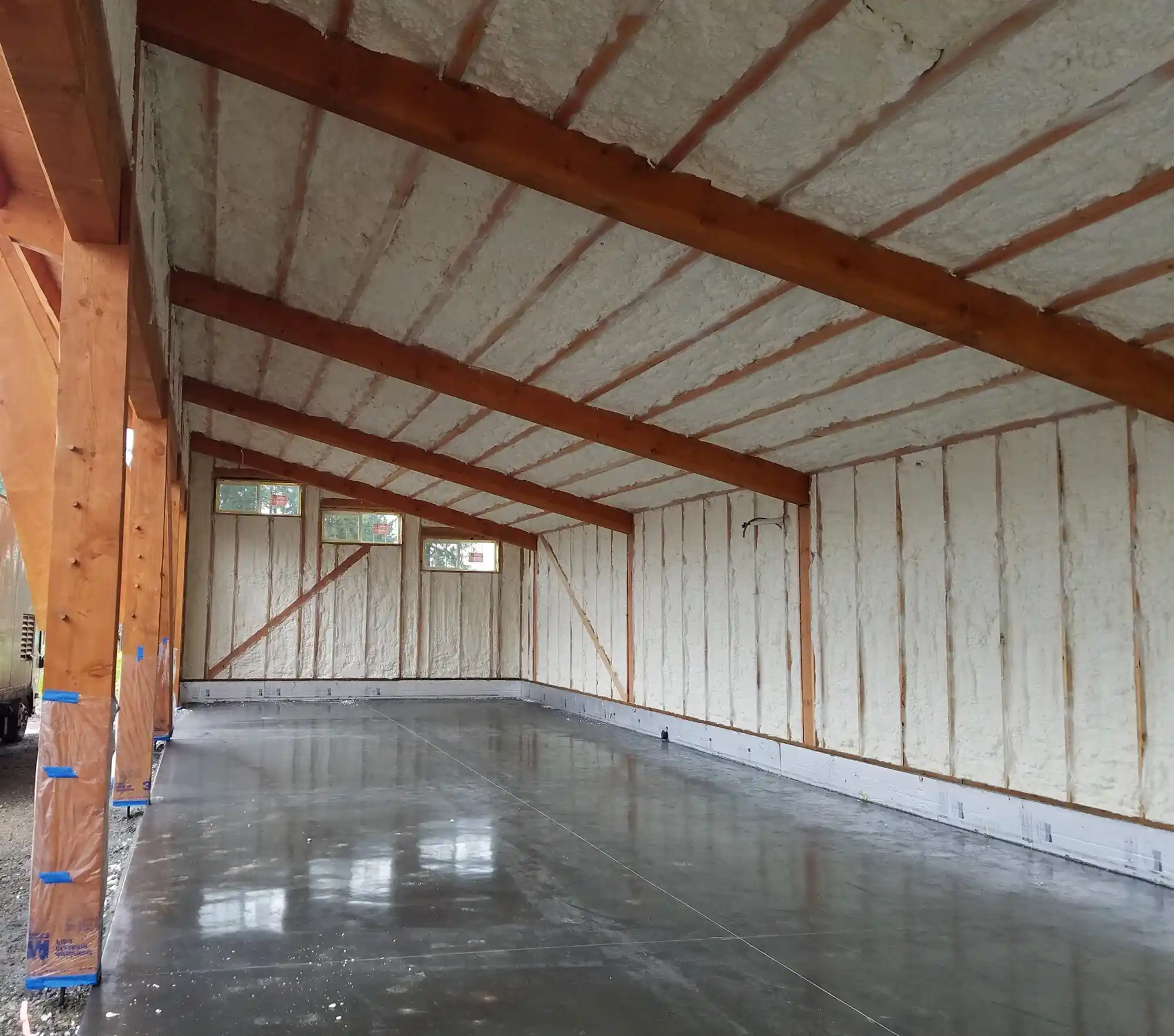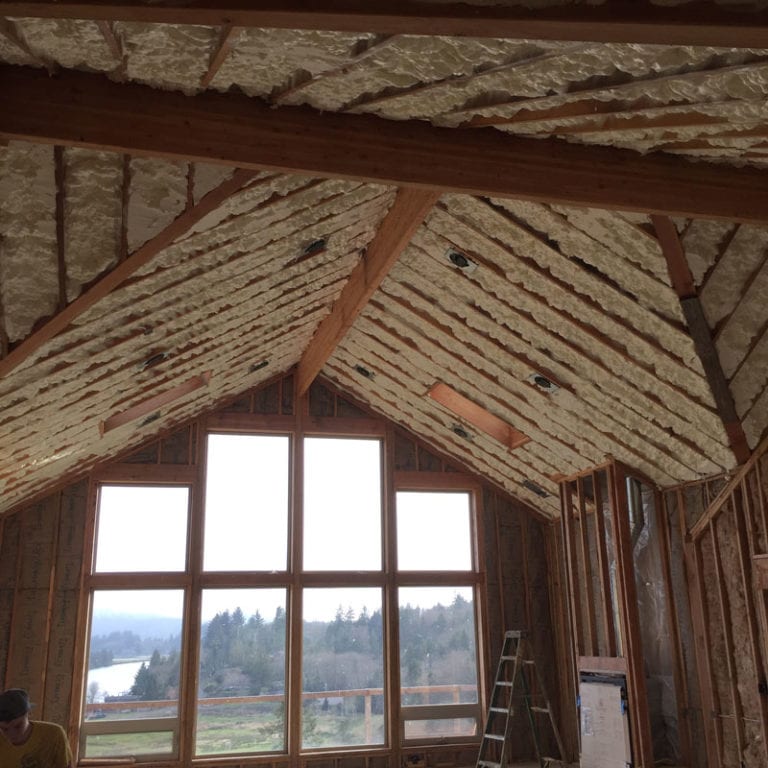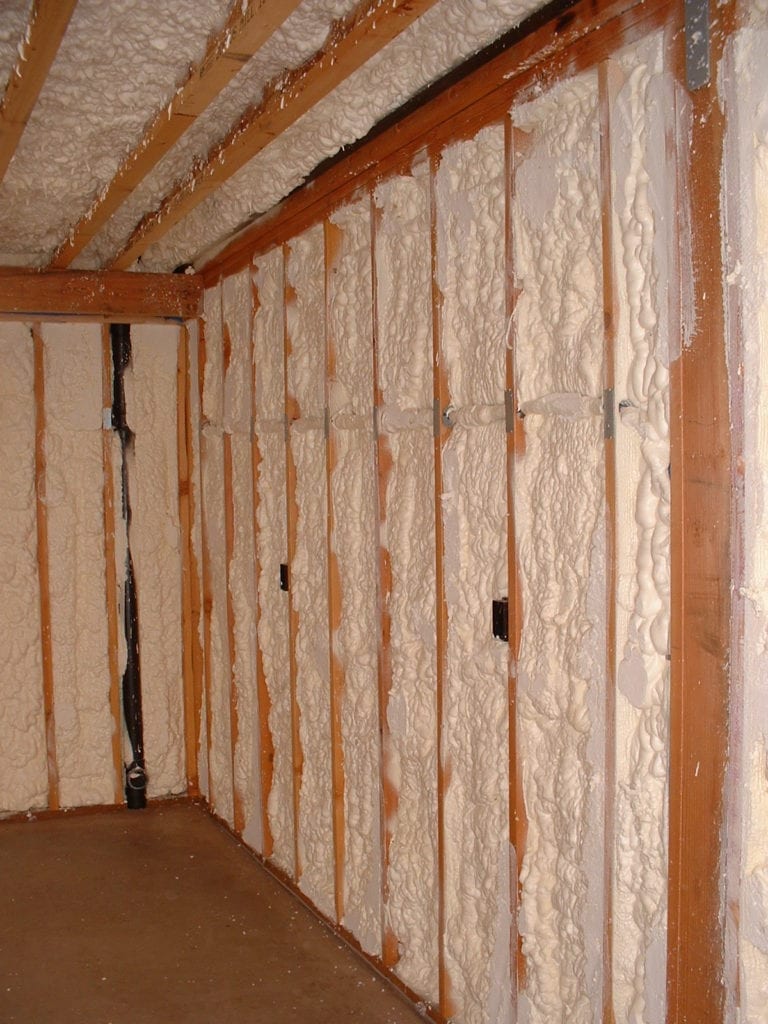How Soundproofing with Spray-On Foam Works
How does spray foam work?
The porous nature of open-cell foam allows for absorbing noise and reducing sound. Foam expands to fill even the tiniest of gaps, transforming your walls into soundproof structures with high STC ratings (sound transmission class). This expansion and absorption makes it much harder for sound waves to penetrate, and in turn, increases noise control.
Spray-on foam is an excellent insulator for heat and cold due to the expansion and sealing process, which in turn increases the energy efficiency of your business. The same technology that provides insulation also assists in blocking sound.
Spray-on foam vs fiberglass vs acoustic panels: Why spray-on foam is the better option
Not only is spray foam insulation good for soundproofing because of its acoustic characteristics, but also because it is incredibly flexible and versatile.
In spaces with hard to reach crevices or odd layouts, fiberglass is much more difficult to install because each piece has to be cut in a very specific way. With foam, it expands to fill even the smallest of crevices, preventing any sound or air leaks.
When it comes to longevity, foam is the clear winner yet again. Over time, fiberglass settles and often ends up leaving small spaces around the edges. These gaps reduce the effectiveness of the soundproofing.
Many people might use acoustic panels or acoustic foam to help with excess noise in their personal spaces. However, they really only work with high frequencies, and are unable to completely soundproof a room.
What options are available?
There are two main types of materials that we use, open and closed cell foam. Although they are both useful for tasks such as insulation, open-cell works much better for sound absorption because it is much more porous. To learn more about the two types, check out our blog.
Sonaspray “FC” Acoustical Treatment
This sound control treatment utilizes fibers and a powerful adhesive to stick to a variety of surfaces. The mixture is applied in a ½” to 1” layer, allowing for a slim, yet highly effective sound control method. Due to its highly versatile nature, it can be applied to most clean surfaces, making it perfect for more difficult spaces, such as domes, corrugated decks, and more.
K-13 Thermal & Acoustical Insulation
While the sonaspray treatment is good for hard-to-cover surfaces, this particular insulation type is great for added fire, mildew, and mold resistance. This resistance is due to the chemically treated natural recycled fibers that it is made of. When applying the insulation, it is combined with a special patented adhesive that results in a cloud-like texture. It is most commonly used in parking garages, gyms, sound studios, and sports facilities.
Ure-K
This particular soundproofing solution is used as a thermal barrier. It has been approved by national code bodies and fire insurance companies to delay the ignition of spray-on polyurethane foam and reduce burning rate. This insulation material is often applied over foam in pre-existing buildings, or it is used as an extra layer of protection in new construction projects.
Your Spray Foam Experts
For any of your commercial soundproofing needs, contact us today and get an estimate! We look forward to serving you. At Spray-on Foam & Coatings, we offer a wide variety of services which are completed by our seasoned professionals. From noisy warehouses to commercial spaces, we utilize top-of-the-line products and procedures to lower the volume of your commercial buildings.
In addition to soundproofing, we also offer many different services, including commercial insulation, roof coatings, and asbestos abatement.







